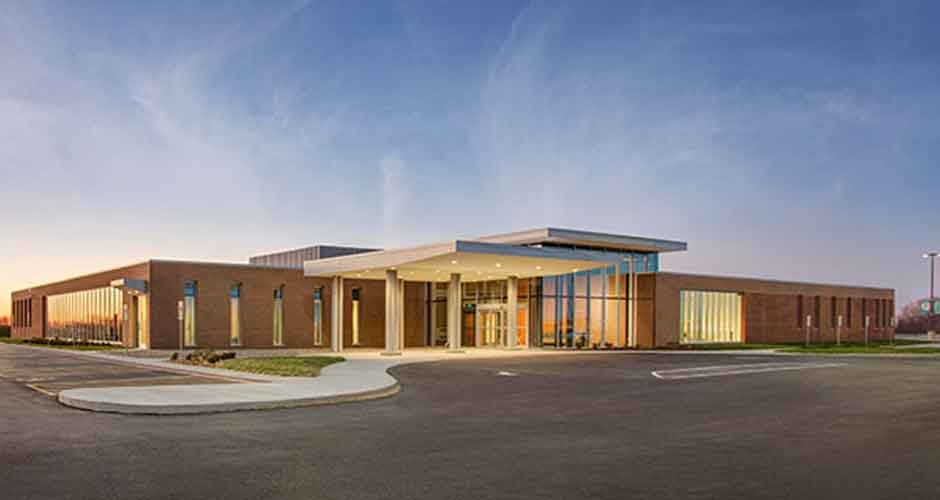A rehab center is more than just brick and mortar; it’s a space that plays a significant role in the healing journey of patients. Join me as we explore the best practices for crafting rehab centers that promote recovery, comfort, and well-being.
Picture yourself entering a rehab center—a place that fosters hope, healing, and renewal. As patients embark on their road to recovery, thoughtful design can be a guiding light, ensuring a conducive and supportive environment for their journey ahead.
Creating a Healing Atmosphere
The first step in designing a rehab center is to create a healing atmosphere. Natural elements, such as indoor plants and sunlight, can work wonders in uplifting the spirits of patients. Think of incorporating tranquil water features, living green walls, and large windows that bring the outdoors in, allowing patients to connect with nature during their recovery.
Additionally, colors and lighting play a pivotal role in creating a calming ambiance. Soft, earthy tones and warm lighting can help create a serene and soothing environment, easing patients’ minds during what can be a challenging time.
Privacy and Dignity for Patients
Privacy and dignity are paramount in a rehab center. Patients need space and respect to focus on their recovery journey without feeling exposed. Design private rooms that provide patients with a personal sanctuary for rest and reflection.
In addition, ensure soundproofing and noise control measures throughout the facility to maintain a quiet and peaceful environment. Nobody wants their privacy invaded by noisy distractions, right?
Promoting Accessibility and Safety
Rehab centers should be designed with accessibility and safety in mind. Implementing universal design principles ensures that the space is friendly to patients of all abilities. Wide doorways, wheelchair ramps, and handrails should be readily available to provide a supportive and inclusive environment.
Safety measures are equally important. Install non-slip flooring, easy-to-reach emergency buttons, and well-lit pathways to minimize accidents and create a secure environment.
Efficient Space Planning
Optimal space planning is essential in a rehab center to ensure smooth patient flow and efficient operations. Design a layout that allows patients to move seamlessly between different areas, such as therapy rooms, dining spaces, and common areas.
The strategic placement of treatment areas and amenities enhances accessibility, making it easier for patients to engage in therapy and group sessions without feeling overwhelmed.
Incorporating Therapeutic Spaces
A rehab center is not just a place for treatment; it’s a sanctuary for healing. Design meditation and reflection areas to allow patients moments of peace and introspection.
Furthermore, incorporate stimulating therapy and exercise spaces. These spaces should be designed to inspire patients to push their limits, achieve their goals, and embrace their journey to recovery.
Fostering a Sense of Community
Rehabilitation is not a solo journey—it’s a team effort that involves the support of loved ones and a nurturing community. Design welcoming common areas and lounges that encourage social interaction and supportive networks.
Having family-friendly spaces for visits and counseling strengthens the emotional support system for patients during their stay. Remember, a sense of community fosters a sense of belonging and positivity in the rehab center.
Emphasizing Hygiene and Cleanliness
Hygiene and cleanliness are non-negotiable in a rehab center. Implement infection control measures in the design, such as easy-to-clean surfaces and appropriate waste disposal systems
Using durable and cleanable materials ensures that the facility maintains a hygienic and safe environment for patients and staff alike.
Integrating Technology and Connectivity
In the digital age, technology plays a crucial role in enhancing patient experiences. Integrate telemedicine and virtual support options to facilitate remote consultations and follow-ups.
Providing accessible charging points and communication outlets allows patients to stay connected with their support systems, even while away from home.
Sustainability and Eco-Friendly Design
When designing healthcare facilities, it is essential to incorporate energy-efficient systems and practices to minimize the facility’s carbon footprint and contribute to a healthier environment.
One critical aspect of eco-friendly design in healthcare facilities is the implementation of mechanical ventilation systems. These systems can help regulate temperature, humidity, and air circulation effectively, providing patients and staff with a comfortable and healthy environment.
Additionally, opting for green materials and building techniques further enhances environmental responsibility. Using sustainable and eco-friendly materials not only reduces the impact on natural resources but also contributes to a healthier indoor environment for patients. Green building techniques ensure that the facility is designed with a focus on energy efficiency, resource conservation, and reduced waste generation.
Such initiatives demonstrate a commitment to environmental stewardship while providing a conducive and sustainable environment for the healing and well-being of patients and staff alike.
Ensuring Regulatory Compliance
Compliance with building codes and healthcare industry guidelines is essential for the successful operation of a rehab center. Adhering to regulations ensures the safety and well-being of patients and staff.
Regular inspections and assessments will guarantee that the facility maintains the highest standards of care.
User Feedback and Continuous Improvement
The journey to creating the perfect rehab center doesn’t end with the initial design. Gathering feedback from patients and staff allows for continuous improvement.
Addressing concerns and making necessary changes demonstrates a commitment to providing the best care and experience for patients.
Conclusion
Congratulations, design aficionados! You’ve now explored the best practices for rehab center design—a crucial component of patient care and well-being.
Creating healing environments that promote recovery, comfort, and dignity is not just a design challenge; it’s a noble mission to support patients on their journey to reclaiming their lives.
By implementing thoughtful design, we can transform rehab centers into sanctuaries of hope, resilience, and transformation. Together, let’s design spaces that heal, nurture, and inspire.



